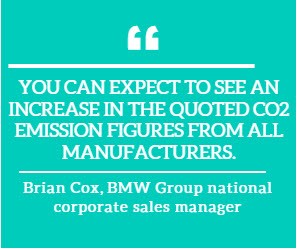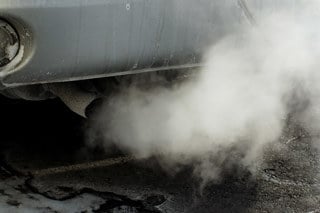BMW is “very much open for business” despite the challenges caused by new emissions testing.
The Worldwide harmonised Light vehicle Test Procedure (WLTP) was introduced last year to replace the ageing New European Driving Cycle (NEDC) test.
Speaking at the Fleet200 meeting on June 12, BMW Group’s national corporate sales manager Brian Cox (pictured) said: “NEDC was designed in the 1980s and was based on theoretical driving.”
The new test, which affects all manufacturers, is designed to better reflect everyday driving conditions and provide more accurate fuel consumption data for the consumer.
“Every vehicle’s optional equipment is considered, since weight, aerodynamics and rolling resistance can affect fuel consumption,” said Cox.
The duration of the WLTP test is 30 minutes, 10 minutes longer than the old one. In terms of distance the test is over 14.5 miles with higher average speeds of 28.9mph, with a maximum of 81.4mph.

“Overall the combination of the new driving cycle and stricter test conditions means the fuel consumption will be more accurately reflective of the real world fuel consumption and you can expect to see an increase in the quoted CO2 emission figures from all manufacturers,” Cox explained.
On average, CO2 emissions for BMW Group petrol and plug-in hybrid models will increase by 7g/km.
Plug-in models, including the 530e and Mini Countryman PHEV will remain under 75g/km, so they will still receive congestion charge exemption.
"Lead times have gone up as we make changes but production will be ramped up from July with new engines and models,” confirmed Cox.
While there are increases in emissions, Cox said most vehicles will stay within bandings and some have seen emissions fall.
The 520d xDrive M Sport falls below 130g/km to 126g/km, for example.
All existing models have to be retested on WLTP before September 2018.
At BMW Group a large number of models have been tested and more are expected for July production.
The published figures are NEDC correlated, which Cox explained is not the same as the old NEDC values as the test procedure is different, which is why the published figures are higher.
Fleets and drivers should expect a better estimate of vehicle fuel consumption and potentially higher taxes, but actual fuel consumption should remain the same.
> READ MORE: What is WLTP and RDE?






















Login to comment
Comments
No comments have been made yet.